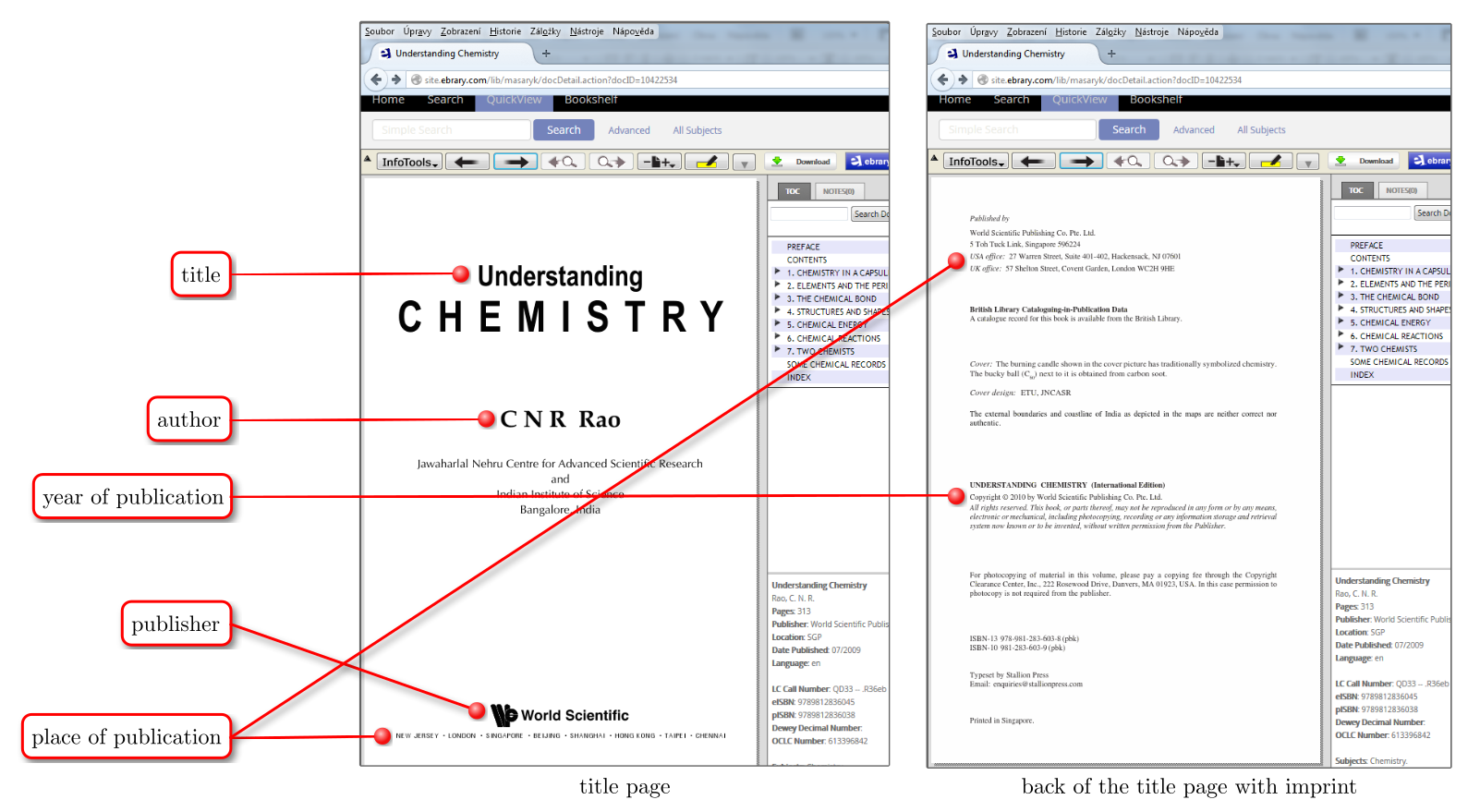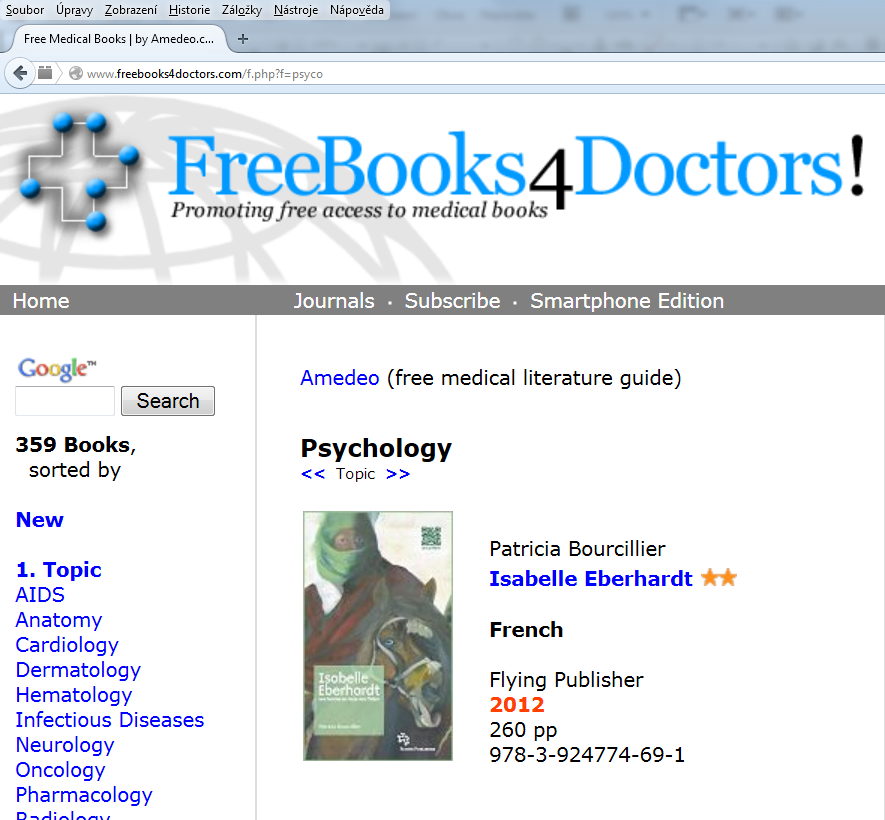Compared to the printed book, the bibliographic reference to an online book does not differ much, it consists of the same entries as the printed book and on top of that it includes information on the type of the document, the date accessed and the URL, at which the book can be accessed. Nevertheless, citing of online documents (i.e. not only online books), often brings various difficulties chiefly when searching for missing information in the book. Let us show two examples now, the first of which represents a smooth creation of a bibliographic reference, while the second raises multiple complications.


Rao, CNR. Understanding chemistry [Internet]. Hackensack (NJ): World Scientific; c2010 [cited 2014 Jun 25]. xii, 300 p. Available from: http://site.ebrary.com/lib/masaryk/docDe- tail.action?docID=10422534
This is an online book and therefore we first found the relevant example of a bibliographic reference in the citation style.
In the same way as with the printed book, here as well we took the relevant details one by one according to the model, while we looked for them on the title page and, if they were not there, on the back of the title page. Even this time these two pages provided us with all necessary information.
Because the title page contained only names of states as the place of publication, we had to copy the name of the city from the back of the title page. Due to the same typography of state names, we first entered the respective state and only then the city.
Because the book only states the year of copyright, the letter c precedes it.
Unlike in the citation of the printed book, we entered information about the type of the document, accessed date and the web address from which we accessed the book and which we copied from the address bar of our browser.
Not everybody may know how to solve the situation presented in this example. We will create a bibliographic reference for the book, which is accessible as a PDF document on a website, but not all information can be found there. Let us show you how to proceed in such a situation step by step.
The website contains a link to the book in PDF format. The link has the form of a picture of a book cover. At this time, write down the date when you downloaded the document, and save the URL of the document for the planned bibliographic reference.

We were able to get the following information for the bibliographic reference:
the type of the document: [Internet]
accessed date: [cited 2014 Jun 26]
web address: http://www.freebooks4doctors.com/link.php?id=1699
Then we took the information for the bibliographic reference from the relevant parts of the book, except for the place of publication which was not mentioned anywhere in the book (see the green part in the bibliographic reference).


Bourcillier, P. Isabelle Eberhardt: une femme en route vers l‘islam [Internet]. Theiss K, illustrator. : Flying Publisher; c2012 [cited 2014 Jun 26]. 288 p. Available from: http://www.freebooks4doctors.com/link.php?id=1699. French.
Although you are not obliged to search for a missing piece of information, you should try anyway but do not spend too much time on that. In our example we did the following:
We looked at the webpage referring to the online book for whether there is either a city or state in which the publisher operates. In the footer of the webpage we tried to click on the link About to check whether the website is managed by the publisher of the book, because then this link would lead us to a page with information about the place of business of the publisher.

The preceding step did not reveal any results, and therefore we tried to find the book by means of the WorldCat online catalogue (http://www.worldcat.org/), which allows one to search through catalogues of libraries around the word. Unfortunately, the found record doesn't include a place of publication, respectively includes a state with a question mark in brackets which means an uncertain data.

Further possible steps are to try to find the publisher’s contact information on the web, and look into other books by the same publisher for whether the place of publication might be specified there. However, you should not spend more than just a couple of minutes on this, because you are not obliged to search for information that are not given.

In this way we were able to finish the bibliographic reference for the online book, which ends with a note on the language of the document (French), as the NLM style requires for works not written in English.
For the sake of completeness, we should add that we did not include the illustrator in the bibliographic reference for two reasons. Firstly, the portion of the illustrator’s work on the creation of the book was negligible as she only illustrated the cover. Secondly, the NLM style says that such details are optional.

Bourcillier, P. Isabelle Eberhardt: une femme en route vers l‘islam [Internet]. [place unknown]: Flying Publisher; c2012 [cited 2014 Jun 26]. 288 p. Available from: http://www.free- books4doctors.com/link.php?id=1699. French.